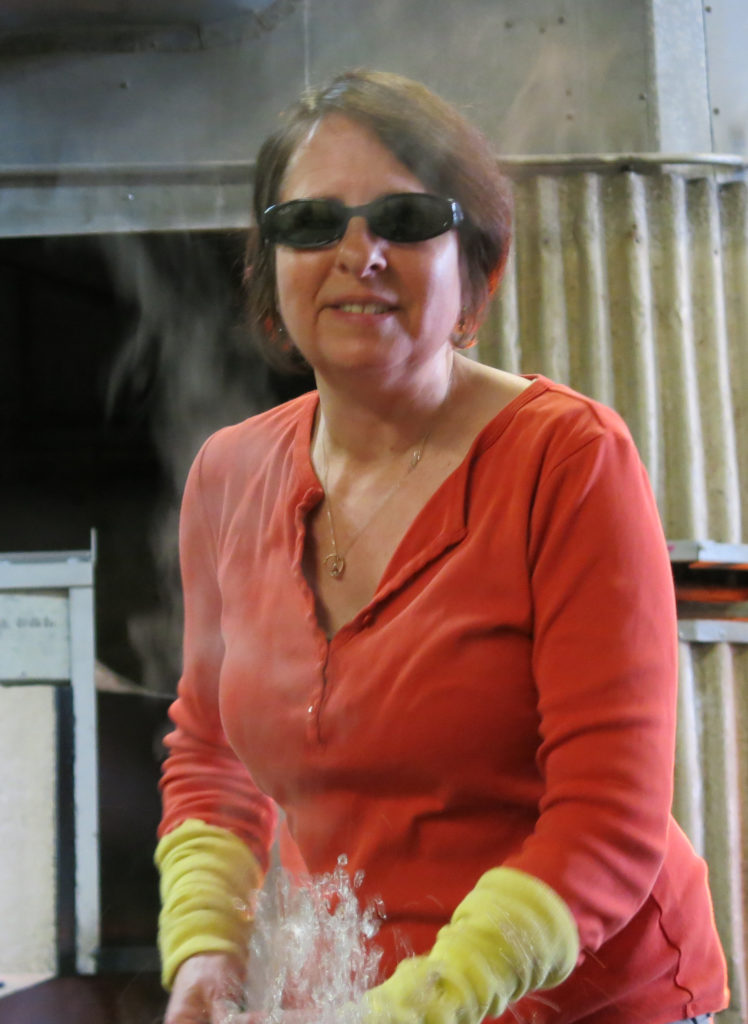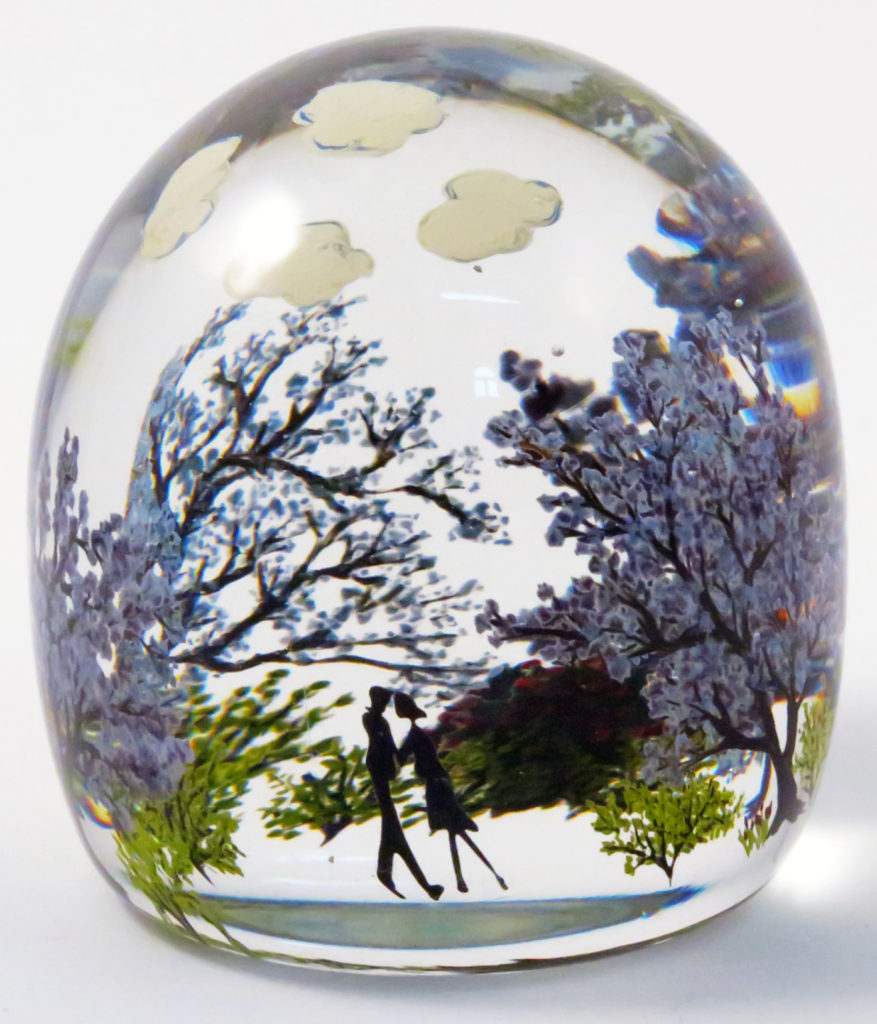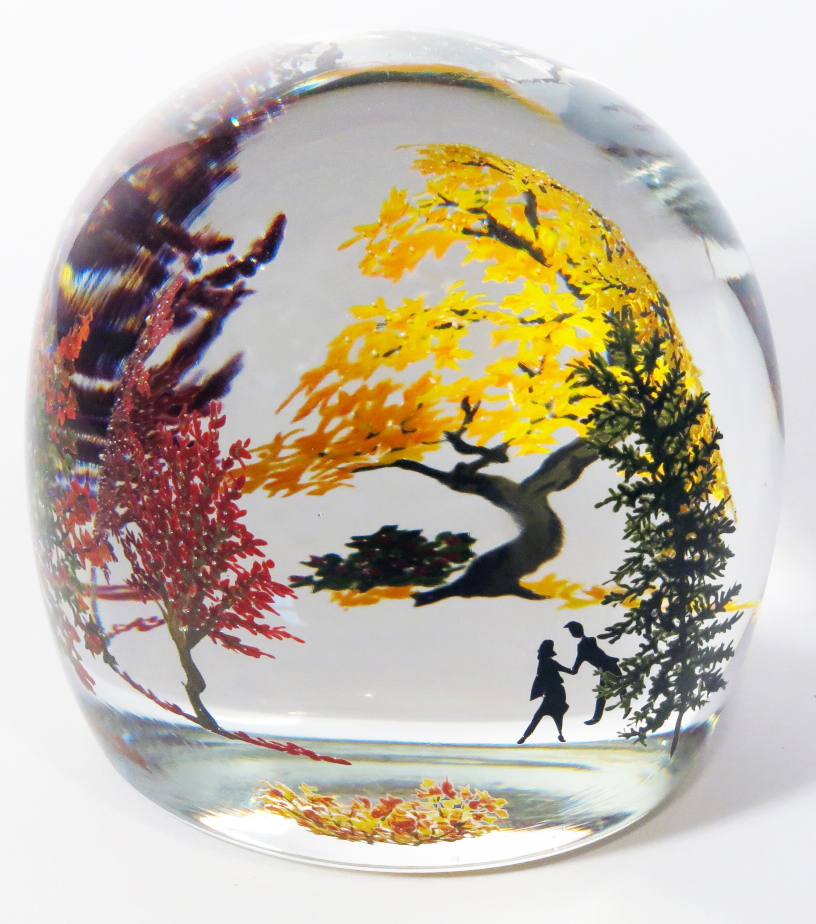Alison Ruzsa



“I enjoy the idea of creating a painting which can be looked at from more than one point of view. With each turn one discovers a different aspect of the picture. This reminds me that there is always more than one way to look at life.” — Alison Ruzsa
Alison Ruzsa’s subjects interact playfully with each other, as they enjoy elements of nature, art, or whimsy. Whether it’s a couple ice dancing on a glistening lake, children flying kites, or art lovers visiting a gallery, her subjects seem to exude a light-hearted absorption in their activities. The result is a hypnotizing spell on viewers, as we mentally place ourselves in the middle of the delightful, captivating scene.
Alison began working in glass in 1991, at a small glass school in her hometown of Cincinnati, Ohio. She moved to New York shortly after that to pursue a career at the New York Experimental Glass Workshop. There she became fascinated by the techniques used by Fred Kahl, who incorporated painted inclusions in the glass. During a class at Pilchuck with Fred and Pike Powers, she attempted her first multi-layer piece. This initial experiment developed into a decade long exploration of the techniques seen in her work today.
Starting with the images drawn from her experience as a printmaker, she initially used black paint, concentrating on the information conveyed by the gestures of the human form in silhouette. Later, she introduced more colors, detailed subjects, and surface designs created by cold working the glass and adding other elements.
Each of her pieces begins with a small gather of hot glass drawn from the furnace, which is then shaped and cooled down to room temperature in an annealing oven. When the glass has cooled it is ready to be painted. Ruzsa uses paints, which have been specially formulated to withstand the intense heat of the glass furnace.
She applies color to the glass in layers. For example, first laying down the color for the facial features, then the flesh tones, and again for the hair. “You can think of it as a combination of reverse and positive painting techniques. The end result of this process makes it possible to see both the front and the back of the image, as one moves around the work.” The glass is also applied in layers. After the first set of images has been painted, the glass is returned to the annealing oven and slowly brought back up to a working temperature. Picked up on the end of a blowpipe, and a fresh gather of hot glass is applied, and carefully shaped so as not to distort the images.
The piece is then cooled again in the oven and is ready for another layer of images. This process is repeated up to five times to create an environment where the clear glass becomes the “space” in the painting. After completion of the final cooling, the piece is then often cold worked for weeks; sawing, grinding, sandblasting, and engraving, are just a few of the things that may eventually be incorporated into the final form of the glass.
Since 1995 Ruzsa has been working at Pier Glass in Brooklyn, NY, with Mary Ellen Buxton and Kevin Kutch. While continuing her work in Brooklyn, Alison also enjoys spending time working with other artists and teaching in Venice, Italy. Bio by: Marti Selman, L.H. Selman LTD.

